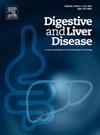区域肝移植网络的实施:托斯卡纳的经验
IF 3.8
3区 医学
Q1 GASTROENTEROLOGY & HEPATOLOGY
引用次数: 0
摘要
背景和目的在过去十年中,由于移植适应症的扩大和供体器官的增加,肝移植的情况发生了显著变化。在托斯卡纳,比萨转诊中心的肝脏移植数量在2024年大幅增加到176例。出于这些原因,托斯卡纳移植组织(托斯卡纳移植组织)任命了一个区域委员会,其优先目标是实施与肝移植指征患者途径相关的保健专业人员网络,以优化器官分配,特别是在满足区域需求方面,并致力于移植指征的时机和适当性。该项目在过去一年中实施,以实现更全面的移植前患者转诊和评估,并优化对已经接受移植的患者的护理。因此,第一年工作的主要目标是验证建立和实施托斯卡纳终末期肝功能衰竭或肝肿瘤易感器官替代治疗(移植肿瘤学)患者转诊和转诊的区域网络的可行性。举行了一系列八次会议,聚集了托斯卡纳肝病学、传染病学、胃肠病学和内科的代表,并促进了关于以下主题的具体培训课程:移植前、移植后和移植肿瘤学。此外,还为托斯卡纳三个主要地理区域的护士和医生举办了三期专门培训班。一个关键因素是与托斯卡纳肝病学家协会(ET)的合作,其中包括计划和制作15个关于肝移植适应症的短视频,并与移植中心进行沟通。其目标是在该组织的机构网站上传播信息和科学材料,促进广泛分发,特别以年轻专业人员为重点。最后,一门涉及全科医生(gp)的具体课程已经安排好了。结果对开展移植途径(术前和术后或两者兼有)的地区医院部门和托斯卡纳患者进行了首次普查,截至2024年7月31日,调查了1000多名已经负责的患者。来自托斯卡纳肝脏移植网络2024年下半年的数据显示,拟议的患者数量有所增加,区域移植受体比例(60%)和区域外移植受体比例(40%)的数据稳定。2024年,进行了344例首次肝移植就诊:250例来自托斯卡纳(73%),其中107例患者在总共176例移植中(61%)进行了移植。2025年1月,托斯卡纳肝脏移植网络附属的一些医院部门为其提交的2025/2026两年期项目核准了资金。我们报告了托斯卡纳区域肝移植网络的方法和初步结果,该网络旨在促进区域参考中心、移植中心和区域当局之间的有效沟通和协调。一个结构化和公认的区域网络能够适当地识别和转诊符合移植途径的患者。移植后,它有助于继续护理和监测可能的并发症,在离患者住所更近的设施中遵循明确和共享的协议,从而减少旅行并优化可用资源,缩短等待时间。本文章由计算机程序翻译,如有差异,请以英文原文为准。
Implementation of a Regional Liver Transplant Network: The Tuscany Experience
Background and Aims
The liver transplant scenario has significantly changed during the last decade due to the expansion of transplant indications and the increased availability of donor organs. In Tuscany, the number of liver transplants at the referral center in Pisa has increased significantly to 176 in 2024. For these reasons, the Tuscany Transplantation Organization (O.T.T.) has appointed a regional commission with the priority goal of implementing the network of health professionals connected to the pathway of patients with indication for liver transplantation to optimize the allocation of organs, with particular regard to the satisfaction of regional needs, and working on the timing and appropriateness of transplant indications. This project has been implemented over the past year to achieve a more comprehensive pre-transplant patient referral and evaluation and to optimize care for patients who have already undergone transplantation.
Methods
The primary objective of this first year of work was, therefore, to verify the feasibility of establishing and implementing a territorial network for the referral and referral-back of Tuscan patients with terminal liver failure or liver neoplasms susceptible to organ replacement treatment (Transplant Oncology). A series of eight meetings was held, gathering representatives from the Tuscan divisions of Hepatology, Infectious Diseases, Gastroenterology, and Internal Medicine, and promoting specific training sessions on the following topics: pre-transplantation, post-transplantation, and transplant oncology. Additionally, three specific training courses were organized for nurses and physicians from the three major geographical areas of Tuscany. A pivotal element was the implementation of collaboration with the Association of Tuscan Hepatologists (ET), which involved planning and producing 15 short videos on indications for liver transplantation and communication with the transplant center. The goal is to disseminate informative and scientific material on the organization's institutional website, facilitating widespread distribution with a special focus on young professionals. Finally, a specific course involving General Practitioners (GPs) has been scheduled.
Results
A first census of the territorial hospital divisions active in the transplantation pathway (pre- and post-phase or both) and of the living Tuscan patients was conducted, with a survey of more than 1,000 patients already in charge as of July 31, 2024. Data from the Tuscan Liver Transplant Network for the second half of 2024 show an increase in the number of patients proposed, with stable data on the proportion of regional transplant recipients (60%) and those from outside the region (40%). In 2024, 344 first liver transplant visits were performed: 250 from Tuscany (73%), of these, 107 patients were transplanted out of a total of 176 transplants (61%). In January 2025, funding was approved by O.T.T. for projects for the biennium 2025/2026 submitted by some hospital divisions affiliated with the Tuscan liver transplant network.
Conclusions
We have reported the methods and initial results of the regional Tuscan Liver Transplant Network designed to facilitate efficient communication and coordination among the territorial reference centers, the transplant center, and regional authorities. A structured and well-recognized territorial network enables the appropriate identification and referral of patients eligible for the transplant pathway. After transplantation, it facilitates the continuation of care and surveillance for possible complications, following unambiguous and shared protocols at facilities closer to the patients' residences, thereby reducing travel and optimizing available resources, with shorter waiting times.
求助全文
通过发布文献求助,成功后即可免费获取论文全文。
去求助
来源期刊

Digestive and Liver Disease
医学-胃肠肝病学
CiteScore
6.10
自引率
2.20%
发文量
632
审稿时长
19 days
期刊介绍:
Digestive and Liver Disease is an international journal of Gastroenterology and Hepatology. It is the official journal of Italian Association for the Study of the Liver (AISF); Italian Association for the Study of the Pancreas (AISP); Italian Association for Digestive Endoscopy (SIED); Italian Association for Hospital Gastroenterologists and Digestive Endoscopists (AIGO); Italian Society of Gastroenterology (SIGE); Italian Society of Pediatric Gastroenterology and Hepatology (SIGENP) and Italian Group for the Study of Inflammatory Bowel Disease (IG-IBD).
Digestive and Liver Disease publishes papers on basic and clinical research in the field of gastroenterology and hepatology.
Contributions consist of:
Original Papers
Correspondence to the Editor
Editorials, Reviews and Special Articles
Progress Reports
Image of the Month
Congress Proceedings
Symposia and Mini-symposia.
 求助内容:
求助内容: 应助结果提醒方式:
应助结果提醒方式:


